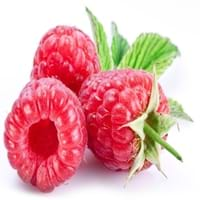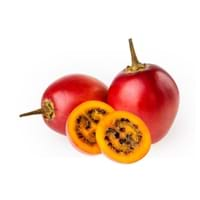Health Benefits
Cancer prevention, Heart care, Prevents macular degeneration, Reduces blood circulation problems
Cancer prevention, Improves eye vision, Prevents diabetes, Prevents high blood pressure
General Benefits
Anti-inflammatory properties, Controls blood sugar levels, Digestive aid, Eye care, Helps in weight loss
Cures inflamed tonsils, Helps in weight loss, Maintains healthy cholesterol level
Skin Benefits
Anti-aging benefits, Brightens and lightens complexion
Anti-aging benefits, Protects skin from oxidative stress
Hair Benefits
Acts as moisturizer, Regulates hair growth, Shiny hair
Protects hair
Allergy Symptoms
Breathing difficulty, Eczema, Hives, Itching, Nasal congestion, Runny nose, Sneezing, Watery eyes, Wheezing
Anaphylaxis, Coughing, Diarrhea, Eczema, Hives, Itching sensation in throat, Nausea, Skin Rashes, Runny nose, Sneezing, Swelling of mouth, tongue or lips, Vomiting, Wheezing
Side Effects
Allergic reaction
Heart burn
Best Time to Eat
Best if taken as a breakfast (or empty stomach), As a snack in the late afternoon, Don't eat after meal, Morning time (before lunch)
Along with meal, As a snack in the late afternoon, Don't consume at night and before bed, Don't eat after meal, Morning time (before lunch)
Vitamin B5 (Pantothenic Acid)
Vitamin C (Ascorbic Acid)
Vitamin K (Phyllochinone)
Phytosterol
Not Available
Calories in Fresh Fruit with Peel
Not Available
Calories in Fresh Fruit without Peel
Not Available
Calories in Frozen Form
Not Available
Type
Berry
Fruit vegetable
Season
Summer
All seasons
Varieties
Amity, August Red, Boyne, Canby, Caroline, Comet, Dinkum, Dorman Red, Latham, Meeker, Black Hawk, Hayda, Lauren, Meeker and Latham
Tamarillo bold gold, Tamarillo red beau, Tamarillo tango and Tamarillo teds red
Color
Black, Purple, Red, Yellow
Orange, Red, Yellow
Inside Color
Pink
Creamy Yellow
Origin
Europe, North Asia
South Africa
Soil Type
Sandy loam
Sandy loam, Well-drained
Climatic Conditions
Cold
Rainfall, Warm
Facts about
- There are more than 200 varieties of raspberries.
- In USA, 90% of the raspberries are grown in Washington, California and Oregon.
- They do not ripe after they are picked.
- A raspberry contain 100 to 120 seeds.
- Up until 1967, tamarillos were referred to as tree tomatoes.
- The name tamarillo is derived from Maori word 'tama' which means leadership and rillo from spanish word 'amarillo' which means yellow.
Top Producer
Russia
New Zealand
Other Countries
Azerbaijan, Canada, Mexico, Poland, Serbia, Spain, Ukraine, United Kingdom, United States of America
Australia, Chile, Colombia, Malaysia, Peru, Philippines
Top Importer
United States of America
United States of America
Top Exporter
Poland
New Zealand
Botanical Name
Rubus Idaeus
Solanum betaceum
Synonym
Not Available
tree tomato, genus Cyphomandra, Cyphomandra
Subkingdom
Tracheobionta
Tracheobionta
Division
Magnoliophyta
Magnoliophyta
Class
Magnoliopsida
Magnoliopsida
Subclass
Rosidae
Asteridae
Family
Rosaceae
Solanaceae
Species
R. idaeus
Solanum betaceum
Generic Group
Rose
Nightshade
Difference Between Raspberry and Tamarillo
We might think that Raspberry and Tamarillo are similar with respect to nutritional value and health benefits. But the nutrient content of both fruits is different. Raspberry and Tamarillo Facts such as their taste, shape, color, and size are also distinct. The difference between Raspberry and Tamarillo is explained here.
The amount of calories in 100 gm of fresh Raspberry and Tamarillo with peel is 53.00 kcal and Not Available and the amount of calories without peel is Not Available and 31.00 kcal respectively. Thus, Raspberry and Tamarillo belong to Low Calorie Fruits and Low Calorie Fruits category.These fruits might or might not differ with respect to their scientific classification. The order of Raspberry and Tamarillo is Rosales and Solanales respectively. Raspberry belongs to Rosaceae family and Tamarillo belongs to Solanaceae family. Raspberry belongs to Rubus genus of R. idaeus species and Tamarillo belongs to Solanum genus of Solanum betaceum species. Beings plants, both fruits belong to Plantae Kingdom.









